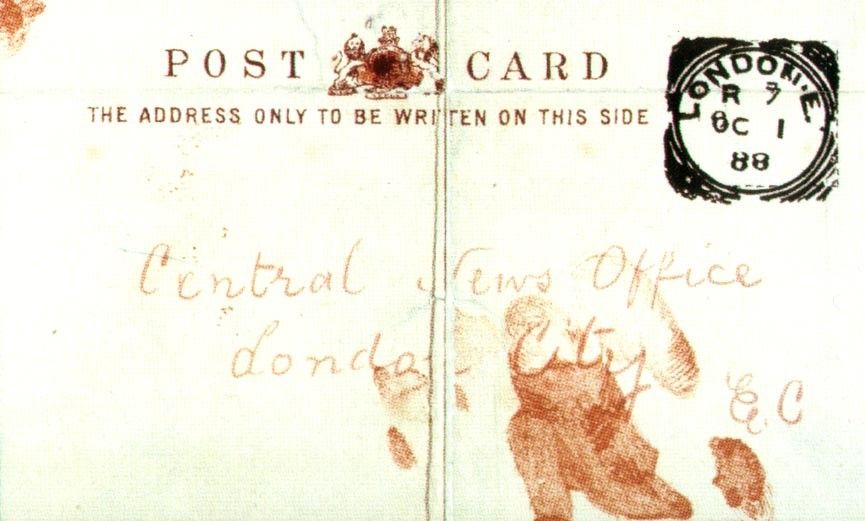This is a huge breakthrough in the case.
After new forensic linguistics analysis of the Jack the Ripper letters, a researcher has concluded with strong evidence that two of the letters were in fact written by the same person.
Andrea Nini, from the University of Manchester, has provided new evidence in the infamous case of the Whitechapel murderer, who is believed to have killed at least five women in London’s East End in 1888. The infamy of the serial killer was in large part created by over 200 letters that exist, all previously regarded as hoaxes crafted to sell more newspapers.
After applying modern linguistic techniques that had never before been used to examine the writings, Dr Nini found that the author of two of the most famous early texts, the ‘Dear Boss’ and ‘Saucy Jack’ letters, to be the same person. He noticed certain linguistic constructions that matched the two cases, such as the unusual use of the phrasal verb to keep back.
 The ‘Saucy Jack’ Postcard (Image credit: University of Manchester)
The ‘Saucy Jack’ Postcard (Image credit: University of Manchester)He said: “My conclusion is that there is very strong linguistic evidence that these two texts were written by the same person. People in the past had already expressed this tentative conclusion, on the basis of similarity of handwriting, but this had not been established with certainty.
“I also found evidence that could link the author of these two letters to the so-called ‘Moab and Midian’ letter, which some people believe was a hoax created by the Central News Agency of London.
My paper on the authorship analysis of the letters involved in the Jack the Ripper case is out as an advanced article. You can read it here: https://t.co/IOU4g9Z2kZ
— Andrea Nini (@and_nini) January 25, 2018
“In addition to the historical value of my findings, they could help forensic linguists to better understand the important issue of individuality in linguistic production.
“Since all the hoaxers tried to mimic the style of the original ‘Jack the Ripper’, we can use the database of the letters to understand how people fake writing style – and how successful they are at imitation. The results indicate that it is very difficult to do so.”






































